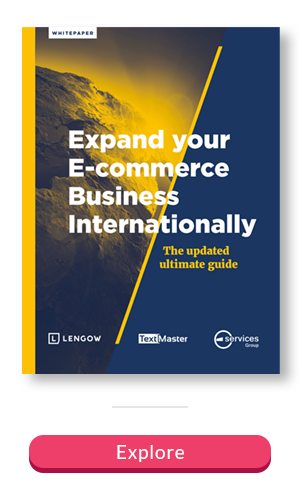With the growth of online sales channels and the easing of restrictive regulations, retailers are facing less barriers than ever to sell abroad, especially in the European Union. Still, you must seem to be as local as possible in order to effectively address an international audience. To do this, you’ll need to manage your product information in the most efficient way. Find out in this article why using a PIM (a Product Information Management System) allows you to optimize how you handle your product information during your international deployment!
1. Increase Revenue with Multi-Channel across Multiple Countries
Just like in your home market, to maximize revenue and profits in new markets you must be where your customers are. That means multiple channels. Without PIM, when spread across multiple locations, multiple channels mean a massive multiplication of headaches.
However, a PIM like Akeneo can export your data wherever and in whatever format is needed. This means that you need only translate and localise your product data once and then automatically export your product data to as many e-commerce platforms or marketplace partners as you choose. This makes it practical to address the best channels for each region or country that you are targeting—not just the biggest ones in your home market. What’s more, Akeneo has an InDesign plug-in that allows you to quickly export specialty or localized print catalogs or point of sale material.
2. Reduce Return Rates
As every retailer knows, high return rates can cripple profitability. On average, retailers can spend up to 8.1% of total sales on reverse logistics. This rate is even higher for e-commerce merchants who can have return rates as high as 50%.
Better product information results in less customer disappointment and thus less product returns. Having accurate localisations prevents customer confusion. Having complete product information properly translated can significantly reduce return rates. This decrease in returns can have a dramatic impact upon profitability.
3. Time-to-Market
Retail is always a race to market. This can be especially important in segments like apparel, electronics, and other rapidly-changing industries. Having a PIM in place to organize your workflow can reduce the time needed for your overall product merchandizing as well radically improve the speed of your localisation efforts by providing a standardised workflow and platform.
4. International Workflow
A properly customized PIM will include embedded workflow that allows your distributed teams to work smoothly within a single tool. For instance, product managers in the home office can enrich product data in their native language and then automatically push the relevant sections to your translation team or partners like TextMaster. The translated text gets approved by the regional team, additional multi-media and other localisation elements can be added, and then sent to the home office for final approval and publication—all within the PIM. This allows for the efficient incorporation of a globalised and distributed workforce across organisational and geographic boundaries.
The cumulative benefit of structuring your product information in a PIM is not just a matter of day-to-day efficiency but rather one of transformational opportunity when it comes to tackling new localisations and channels. If you think of the time and complexity of enriching your product data as a variable X, then each additional market and channel essentially becomes an exponential cost as complexity goes through the roof.
However, with the power of a structured product data in PIM, each new localisation is merely an additive cost of less than X and each new channel is nearly cost-free with the exception of setup costs. In other words, PIM needs to be at the heart of your expansion strategy.
To find out more about scaling your global product management, download our ebook.






